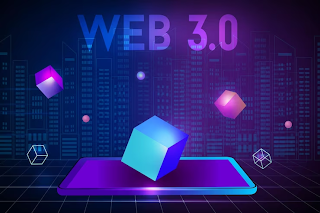Web 3 A Decentralized Future on the Horizon
The internet has evolved over the years, from a simple information sharing platform to a sophisticated network that has transformed our way of life. In this dynamic technological ecosystem, the next big thing in the online environment is Web 3, an innovative concept that promises to bring the internet to a new level of adoption, decentralization, and autonomy.
In this article, we will explore the concept of Web 3, its technology and applications, advantages, and challenges.
What is Web 3
Web 3, also known as the decentralized web, is a web architecture that leverages blockchain technology to create a more secure, transparent, and privacy-focused internet experience. Unlike its predecessor, Web 2, which relies on centralized entities such as social media networks, search engines, and cloud computing, Web 3 is a distributed network that operates without intermediaries.
Web 3’s core idea is to create an open, permissionless network that enables users to interact with each other and exchange value without the need for centralized gatekeepers.
The Technology behind Web 3
The core technology behind Web 3 is blockchain, a distributed ledger that stores transactions and data across multiple nodes in a network. Blockchains provide a trustless environment where participants can interact without the risk of fraud, censorship, or data manipulation. Web 3 uses blockchain technology to create decentralized applications (dApps) that run on peer-to-peer (P2P) networks. These dApps can have various applications, such as social media, e-commerce, finance, and more.
Advantages of Web 3
Web 3 has several advantages that differentiate it from Web 2. Firstly, it eliminates the need for intermediaries, which reduces costs and improves transparency. Secondly, Web 3 provides a more secure and privacy-focused environment for users to interact and transact without worrying about data breaches or surveillance. Thirdly, Web 3 promotes an open, decentralized, and permissionless ecosystem that gives power to users and fosters innovation.
Applications of Web 3
Web 3 has vast potential applications that can revolutionize various sectors of the economy. For instance, in finance, Web 3 can enable borderless transactions, decentralized lending, and digital asset management. In social media, Web 3 can create a censorship-resistant platform where users own their data and have control over their privacy. In e-commerce, Web 3 can facilitate peer-to-peer marketplaces that allow direct interactions between buyers and sellers without the need for intermediaries.
Challenges of Web 3
Despite the many benefits of Web 3, several challenges must be overcome for it to reach its full potential. Firstly, scalability is a significant concern since blockchains are still limited in terms of transaction throughput. Secondly, usability is also a challenge since dApps are often complex and require technical expertise to use. Lastly, regulation and compliance are crucial for Web 3’s adoption since regulatory frameworks are still evolving.
Conclusion
Web 3 is an exciting new concept that promises to revolutionize the internet as we know it. Its core technology, blockchain, provides a trustless, decentralized environment that eliminates intermediaries and fosters innovation. Web 3 has vast potential applications, from finance to social media to e-commerce. However, there are also challenges such as scalability, usability, and regulatory compliance that need to be addressed. Despite these challenges, Web 3 is an exciting new frontier that holds enormous promise for a decentralized, democratic, and autonomous future online.




